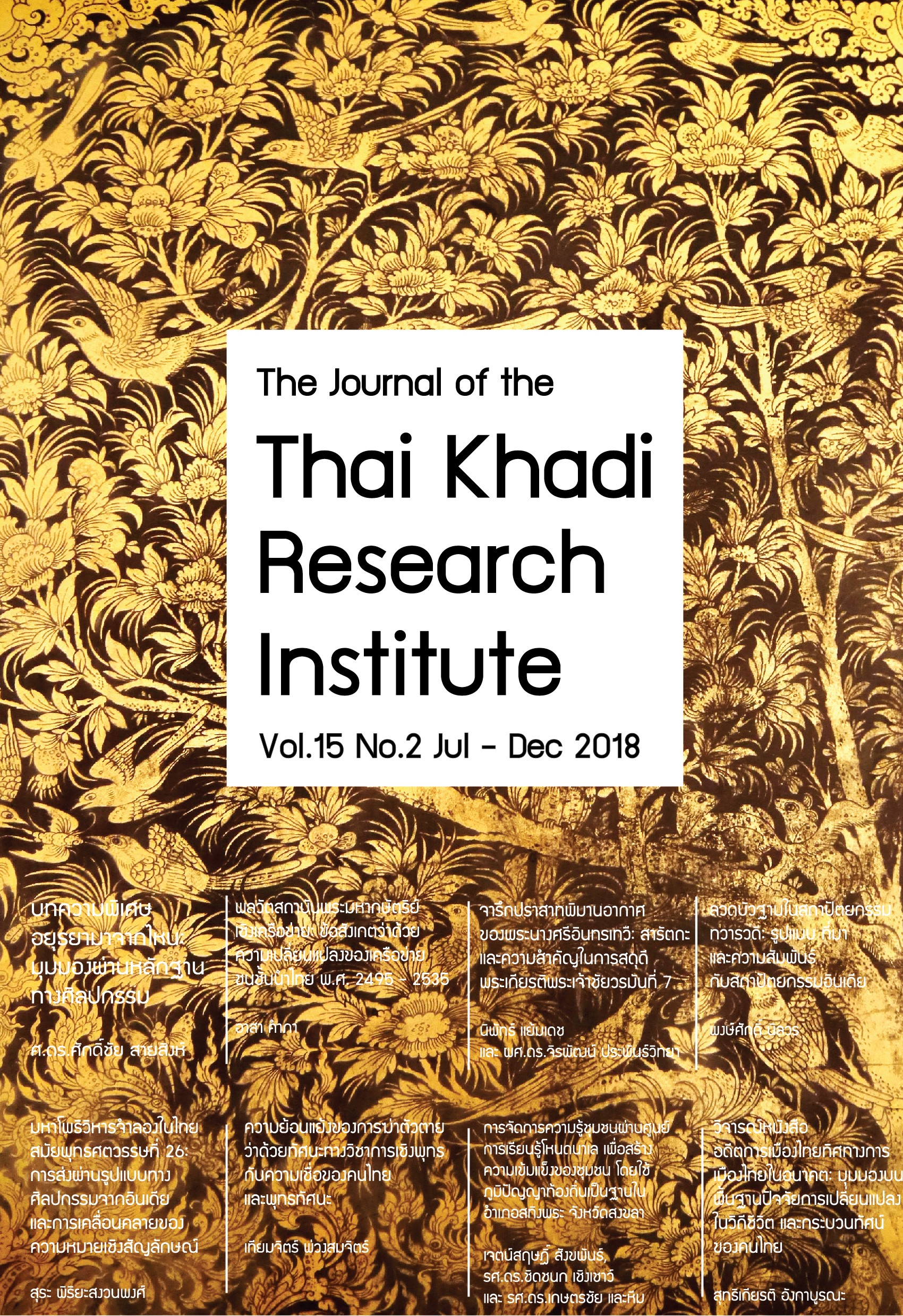Base Moldings in Dvaravati Architecture: Style, Source and Relation to Indian Architecture
Main Article Content
Abstract
This article analyzes base moldings of Dvaravati architectures which are sourced from Indian architecture in various regions across North and South India. Findings reveal that the style of Dvaravati base moldings is mixed between the Indian molding style of North and South India, creating a unique Dvaravati architecture. It has also been found that the architectural style of South India has influenced a great many Dvaravati artists, in line with contemporary architecture in Southeast Asia.
Downloads
Download data is not yet available.
Article Details
Section
Articles
There is no charge for paper processing and publication. Once the paper is under peer-review process, however, if the paper is withdrawn for any reason the author will be responsible for the expense of 3,000 Baht occurred in the review process.
References
Aphinanwet, W. (2012). Pratimākam khon khræ nai watthanatham thawān Wadī: rūpbǣp læ khwāmmāi [Dwarf Sculptures in Dvaravati Culture: Forms and Meanings] (Master of Arts Thesis, Art History Department, Silpakorn University).
Pierre Dupont. (2006). The Archaeology of the Mons of Dvaravati. Bangkok: White Lotus.
Fine Arts Department, Archaeology and National Museum Bureau 1 Ratchaburi. (2000). Thung sētthī bōrānnasathān thawān Wadī chāifang thalē phet burī [Thung Setthi, Dvaravati Archaic Sites on Phetchaburi Coast]. Bangkok: Fine Arts Department.
Hardy, A. (2007). The Temple Architecture of India. Chichester, West Sussex: John Willey & Sons.
Joanna Gottfride Williams. (1983). The Art of Gupta India: Empire and Province. New Delhi: Heritage Publishers.
Meister, Michael W. (1983). Encyclopaedia of Indian Temple Architecture South India Lower Dravidadesa 200 B.C.- A.D. 1324. Delhi: Oxford University Press.
Saising, S. (2015). Rāingān kānwičhai rư̄ang čhēdī nai prathēt Thai: nǣokhit khati kānsāng phatthanākān thāng rūpbǣp læ kān wikhro̜ thāng prawattisāt [Research Report on Pagodas in Thailand: Concepts, Beliefs for Construction, Development of Forms and Historical Analysis]. Bangkok: Silpakorn University.
Tingsanyachali, C. (2015). Sinlapa Thai phāitai rǣng bandān čhai čhāk sinlapa ʻIndīa bǣp pāla [Thai Arts under Influences from Pala Indian Art]. Nonthaburi: Matichon.
Pierre Dupont. (2006). The Archaeology of the Mons of Dvaravati. Bangkok: White Lotus.
Fine Arts Department, Archaeology and National Museum Bureau 1 Ratchaburi. (2000). Thung sētthī bōrānnasathān thawān Wadī chāifang thalē phet burī [Thung Setthi, Dvaravati Archaic Sites on Phetchaburi Coast]. Bangkok: Fine Arts Department.
Hardy, A. (2007). The Temple Architecture of India. Chichester, West Sussex: John Willey & Sons.
Joanna Gottfride Williams. (1983). The Art of Gupta India: Empire and Province. New Delhi: Heritage Publishers.
Meister, Michael W. (1983). Encyclopaedia of Indian Temple Architecture South India Lower Dravidadesa 200 B.C.- A.D. 1324. Delhi: Oxford University Press.
Saising, S. (2015). Rāingān kānwičhai rư̄ang čhēdī nai prathēt Thai: nǣokhit khati kānsāng phatthanākān thāng rūpbǣp læ kān wikhro̜ thāng prawattisāt [Research Report on Pagodas in Thailand: Concepts, Beliefs for Construction, Development of Forms and Historical Analysis]. Bangkok: Silpakorn University.
Tingsanyachali, C. (2015). Sinlapa Thai phāitai rǣng bandān čhai čhāk sinlapa ʻIndīa bǣp pāla [Thai Arts under Influences from Pala Indian Art]. Nonthaburi: Matichon.


